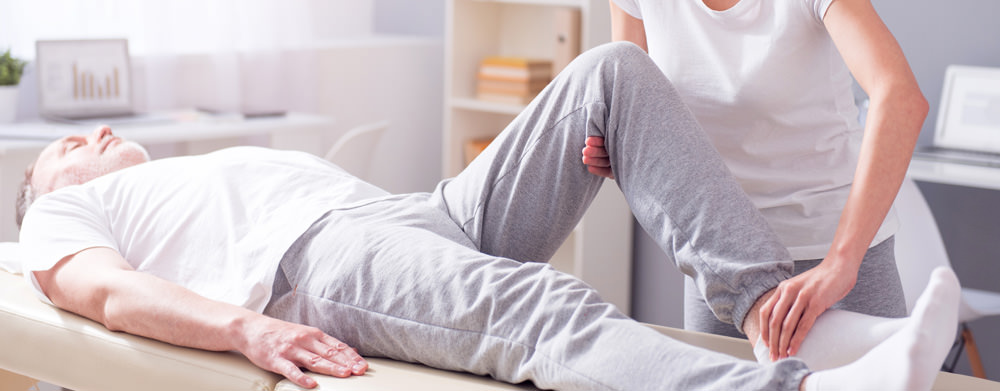
If you’re dealing with acute or chronic pain from an injury or recovering from surgery, joint mobilization can help restore range of motion around a joint, alleviate your pain and improve functionality.
At Summit Orthopedics, we specialize in joint mobilization alongside other forms of physical therapy for orthopedic and musculoskeletal conditions. Our team of experts provides innovative therapies for patients in the Minneapolis/St. Paul area. Together, we can work to relieve your pain and promote healing.
What Is Joint Mobilization?
Joint mobilization is a skilled manual therapy using passive movements to improve range of motion, increase joint function and reduce pain. During this hands-on technique, a physical therapist holds one segment of a joint steady. They then apply targeted pressure or traction (pulling) to the other segment of the joint. The pressure mimics the natural glide that happens between the bones.
This therapy can be performed at different intensity levels. You typically guide the therapy by providing feedback on comfort levels. The treatment should not cause pain, and your physical therapist will work with you to find an appropriate intensity level.
Joint Mobilization Techniques
During treatment, your physical therapist helps you find a comfortable position. The physical therapist then uses their hands to localize the joint and apply force in the appropriate direction. Therapists use several methods of joint mobilization therapy. Depending on your needs, they can apply each type with different grades of intensity.
Joint mobilization techniques generally fall into the following three categories:
- Oscillatory joint mobilization: slow, light pressure
- Sustained joint mobilization: pulling in a continuous manner
- Manipulation joint mobilization: quick, heavy pressure
Amplitude thrusts are a form of joint mobilization used to treat musculoskeletal conditions in the spine and extremities. Amplitude refers to the movement size. Your therapist applies a high velocity, low-amplitude thrust to a joint to restore motion and function or reduce pain.
Joint mobilization grades describe the speed at which it is performed and the associated movements.
- Grade 1: Small-amplitude, slow oscillations at the beginning of a joint’s range of motion
- Grade 2: Large-amplitude, slow movements within the joint’s entire available range
- Grade 3: Large-amplitude, slow movements applied from the mid-range to the limit of a joint’s range of motion
- Grade 4: Small-amplitude, slow movements at the limit of a joint’s range of motion
- Grade 5: A high-velocity, small-amplitude thrust that challenges the joint’s available motion
Who Benefits From Joint Mobilization?
Joint mobilization can have a therapeutic effect on stiffness or pain in many of the body’s joints, from the shoulder—the joint with the largest range of motion—to joints with a more confined range of motion. It works well for shoulder pain and stiffness, including frozen shoulder and tendinitis, spine pain and stiffness, stiff ankles immobilized in a boot, and many other situations.
Mobilization techniques benefit conditions including:
- Acute or chronic back pain
- Ankle stiffness
- Shoulder pain
- Tennis elbow
Is Joint Mobilization Right for You?
Joint mobilization isn’t for everyone. Your provider may not recommend this approach if you have excessively flexible or fused joints. If you’re dealing with these conditions, we have alternative therapies available.
If you’re experiencing limited mobility in a joint that isn’t improving with traditional orthopedic treatments, joint mobilization may be a good option. Talk with your doctor and decide together on the approach that feels right for you and your specific injury.
